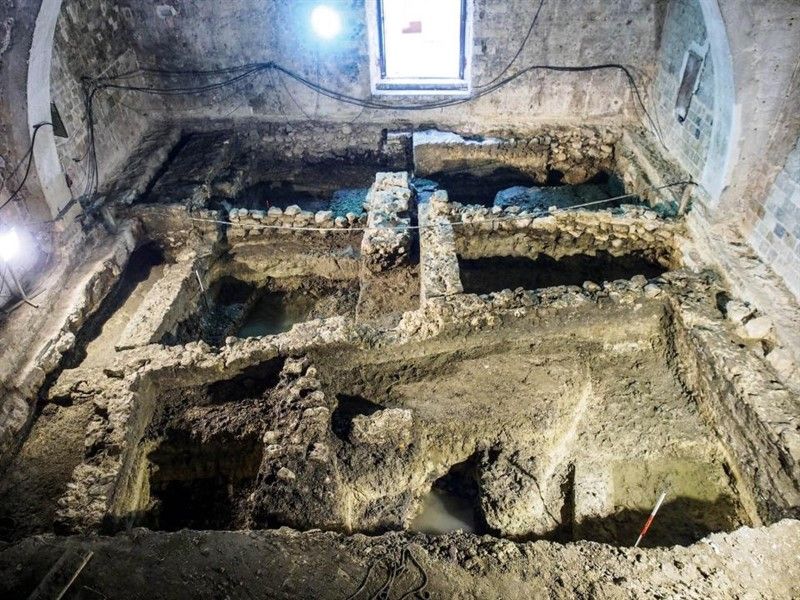An article at Slobodna Dalmacija from January 5, 2016 informs about the recent archeological explorations done at the Arsenal in Hvar town.
Archaeological research, that started in November 2014 at the Hvar Arsenal is now done. According to the Hvar Mayor Rino Budrović, the 3-part explorations lasted about 3 months and were fully financed by the Town of Hvar. Through the whole time of the exploration, two archaeologists were present at the site - Nebojša Cingeli from the Split based company "NEIR", hired for the archaeological work and Eduard Visković from Hvar town. There was the Head of the Department of Concervations from Trogir, Miro Katić who was exploring Arsenal to a lesser extent in 1994 and 1996 and the documentary maker Porin Kukoč from "NEIR" on the team of experts completing this mission. The Conservatory Supervision was under the jurisdiction of the archaeologist Saša Denegri.
The first part of the exploration concentrated on two easternmost aisles of Arsenal and was done in November 2014. The next two aisles were explored in January and February 2015, which made the eastern half of Arsenal explorations complete. The third and last part was done through December 2015 and focused on the four western aisles. In a rather harsh conditions of continuous penetration of water and mud, the entire surface of Arsenal was explored.

(photo: Slobodna Dalmacija)
- The overall findings can be divided into three stratigraphic units: The classical antiquity, Late antiquity and the period of Venetian rule. The oldest findings are pottery and architecture from the classical period of 1st and 2nd century. A whole room with dimensions of 7x15 meters was found. The Roman architecture of this period was so far unknown in Hvar town. Taking into account the large amount of pottery found in the port of Hvar and the surrounding areas in earlier explorations, we can assume, that Hvar was even in this period an inevitable antique port - says the archaeologist Visković.
Late antique Hvar has long been known to archaeologists who have studied it, however, all studies were to a smaller extent and on a smaller surface. The late antiquity found at Arsenal shows a picture of the city, which was intensively living for centuries. The settlement of late antiquity was found in several phases, which will be more accurately interpreted by a further detailed analysis and consists of large buildings, many amphoras, but also of fine and more expensive fragments of North African sigillata.
- In the third part of the investigations, when the western half of the Arsenal was explored, according to the current interpretations, late antique defensive walls with wooden poles as the foundation were found - said Visković.
According to Visković, the third historical sequence is made by the findings from the early modern period, from the time of the Venetian rule. While in the eastern part of the Arsenal, there was less Venetian findings; in the western part, there was significantly more of them. Particularly interesting are the walls, which could be dated to the 14th and 15th centuries, which makes them a part of the earlier stages of the Arsenal.
Among architecture, there were some coins, majolica-type pottery fragments and cannonballs of different calibres found at the explorations. In the first part of the explorations in November 2014, the biggest interest has caused the finding of several large stone balls with a diameter of 50 centimetres. Totally ten of them were found by the end of the explorations. According to some sources, these were used as ammunition for the siege or defence devices, while other opinions suggest, that these balls could be cannonballs of a large calibre. On the last day of the exploration, a big iron anchor was found at the entrance to Arsenal. Because of the problematic circumstances of this finding, the anchor was protected and buried, but will be removed as soon as the dynamics of the construction works at Arsenal makes it possible.


